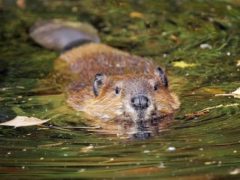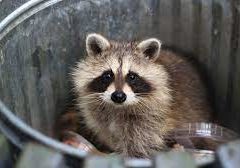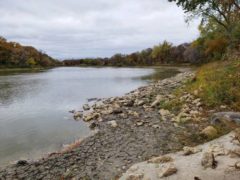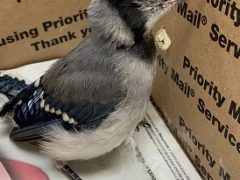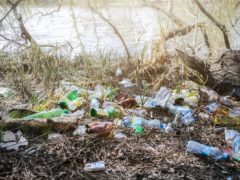See amazing stories of wildlife rescue and release: a goose family separated and reunited, a duck endangered by a fishing hook and bobber, a toad accidentally dug up by a gardener, and more! Thank you for your support! [Read More …]
Avian Disease Threatens Birds in Washington, DC, Area
Highly Pathogenic Avian Influenza (HPAI) 2022 Confirmed in Waterfowl in Maryland, Virginia Background: Highly pathogenic avian influenza (HPAI) has been found in both wild and domestic birds in the eastern and central United States, including near Washington, DC. This type of HPAI is considered a low risk to people, but it can be dangerous to [Read More …]
“Hey, Who Took My Tree?” Living with the Busy Beaver
As City Wildlife frequently tells people, the District of Columbia is home to a surprising number of wild animals. But only a select few of these animals are ecosystem engineers; among animals, beaver have an essential monopoly on that activity. We humans engineer our environment, of course, although it often seems as much to our detriment as [Read More …]
What to do when your wild neighbors move in!
Wild animals live and thrive in our communities, and conflicts with humans occur. Outdated approaches to resolving these conflicts are still widely in use but generally do not work and are often not humane. In this recorded webinar from January 20, 2022, Senior Director of Urban Wildlife Programs for the HSUS, John Griffin shares anecdotes and [Read More …]
Raccoons Unmasked!
Did you know that Washington, DC’s Rock Creek Park holds the record for densest population of urban raccoons ever documented? And nearly everyone in the area has seen these evening explorers with their bandit masks and ringed tails. What are they up to? And how do they manage to thrive in our built-up environment? PhD biologist John Hadidian, who [Read More …]
A Falcon Flies Free!
Several weeks ago, we received a juvenile Merlin falcon after she collided with a window — we suspect at considerable speed. Small but fierce predators between a robin and a crow in size, Merlins rely on a burst of speed and surprise to catch other birds, and this unfortunate bird’s burst of speed took her right into a window. When [Read More …]
Are seawalls worth it?
Throughout history, humans have attempted to secure and stabilize the environment, thwarting nature’s relentless and ever-changing modifications. The seawall, a human-made structure (from rock, concrete or other materials) placed alongside stretches of beach or riverbank, is one measure employed. Unfortunately, while seawalls may solve some [Read More …]
Living Sentinels: Monitoring Wildlife to Prevent the Proliferation of New Diseases
This online webinar explores the connection between humanity’s treatment of wildlife and outbreaks of diseases like Covid19, as well as the role that wildlife rehabilitation centers like City Wildlife play in protecting public health. It premiered in September 2020. DC Councilperson Mary Cheh moderates the discussion, which features: John [Read More …]
CITY WILDLIFE RESPONDS TO OUTBREAK OF BIRD DISEASE
City Wildlife has recently seen a significant influx of young birds, mostly Common Grackles, European Starlings, and Blue Jays, with eye issues leading to blindness and neurological problems affecting the birds’ balance and coordination. Other regional agencies are reporting the same, as well as many dead fledglings. City Wildlife and other [Read More …]
Litter and Our Waterways
It’s a hot day and you’re out and about. Maybe you grab a bottle of water from the nearest convenience store. You take off your facemask to drink, and it falls to the ground accidentally. That’s OK, you have a spare. And after you finish that bottle of water, there’s no garbage can handy, so you just set it down on the sidewalk and figure “the city [Read More …]
- « Previous Page
- 1
- 2
- 3
- 4
- 5
- …
- 9
- Next Page »
